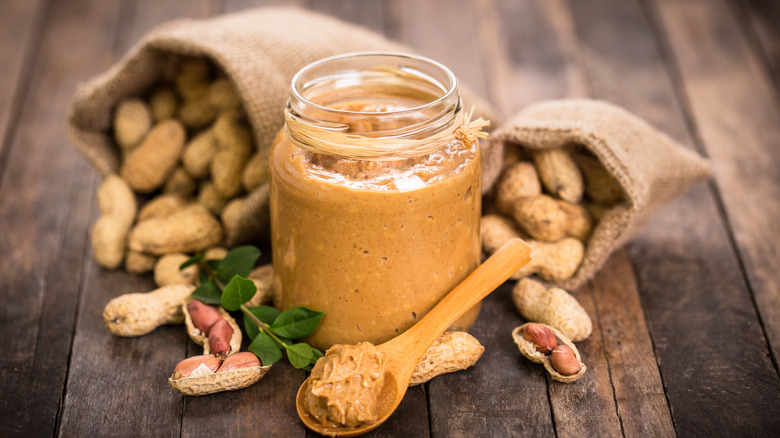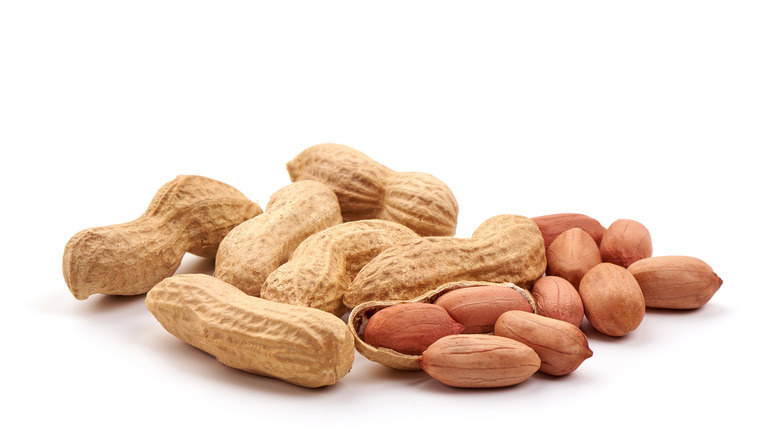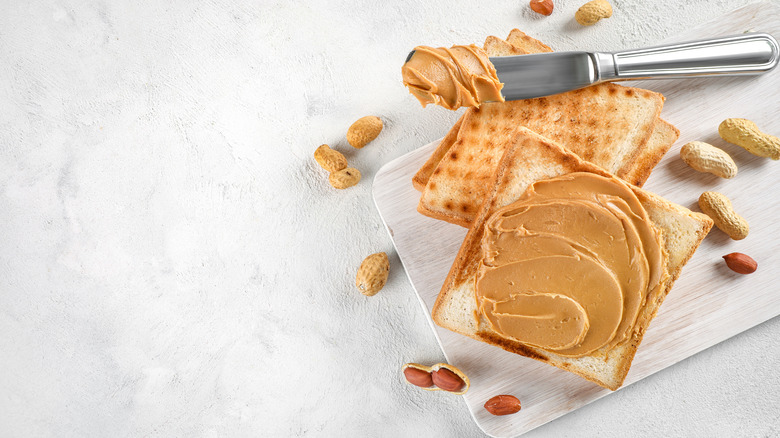Is It Necessary To Refrigerate Natural Peanut Butter?
If you feel like mixing up your sandwiches and smoothies, there is certainly no shortage of nut butter to choose from. While peanut butter may be the most classic choice, increased demand for alternatives has launched a burgeoning nut butter market over the past few decades. A walk through just about any grocery store will reveal just how many options there are, with almond, cashew, pecan, and even walnut butter sitting on shelves.
However, while there is an ever-growing number of alternatives, peanut butter still remains the most popular nut butter choice in America. In fact, peanut butter purchases account for 3/4 of the nut butter market, according to Feast and Field. According to Statista, over 299 million Americans consume peanut butter, spending close to $2.3 billion per year on the snack. This versatile spread can be used in a number of dishes, from indulgent desserts to satisfying savory dishes, and even as a dressing, per Real Simple. So it is probably safe to bet that most people have a jar or two of this popular condiment in their pantry. But is that the best place for storing your peanut butter?
There are different varieties of peanut butter
Peanut butter is made by shelling and roasting raw peanuts, which are then left to cool. Once the nuts have cooled, the skin is blanched and the heart is removed. In contrast, the rest of the nut is ground in temperatures of around 170 degrees Fahrenheit, according to the American Peanut Shellers Association. After the nuts have been ground to a fine powder, emulsifiers are added and butter is quickly cooled down by 50 degrees to crystalize the emulsifiers.
However, there is more than just a single variety of peanut butter on the market. True peanut butter fans probably already strongly prefer crunchy or creamy peanut butter. While the creamy butter is smooth and spreadable, chunks of peanut granules are added to give the other variety of peanut butter a satisfying crunch. But there are more peanut butter preferences than just smooth or chunky. Some people might reach for a jar of Skippy or Jif, but they are far from the only brands on the market these days.
Unlike these classic brands, which often contain sugar, hydrogenated oils, stabilizers, and preservatives to extend their shelf life, all-natural peanut butter is made with as few additives as possible. Most types are simply made with two ingredients: ground peanuts and salt, per Food & Wine. However, without additives, the oil tends to separate at room temperature, meaning it has to be mixed thoroughly before it can be spread.
Peanut butter doesn't have to be refridgerated
Because natural peanut butter doesn't contain additives or preservatives, it is a common practice for people to refrigerate it, rather than store it in the cabinet next to their Skippy. However, while all-natural peanut butter does have fewer preservatives than your average jar of Skippy, that doesn't necessarily mean it has to be refrigerated. According to Eating Well, if you plan on consuming that jar of natural peanut butter within a month, it is totally fine to leave it in a cool, dry cabinet. This is probably good news if you don't like the texture of cold peanut butter, which can be difficult to spread. While it might separate at room temperature, natural peanut butter can still be stored in a pantry — it just needs a little stir before it is good to go.
However, if you expect it might take you longer to finish your jar of peanut butter, then it might be a good idea to place your peanut butter in the fridge, regardless of if it is natural or not. While the oils in natural peanut butter can go rancid over time, refrigerating any opened jar of peanut butter can extend its shelf life for up to nine months, per the National Peanut Board. So refrigeration certainly won't hurt your peanut butter, but it can also be safely stored on the shelf for several weeks, even the all-natural kind.


